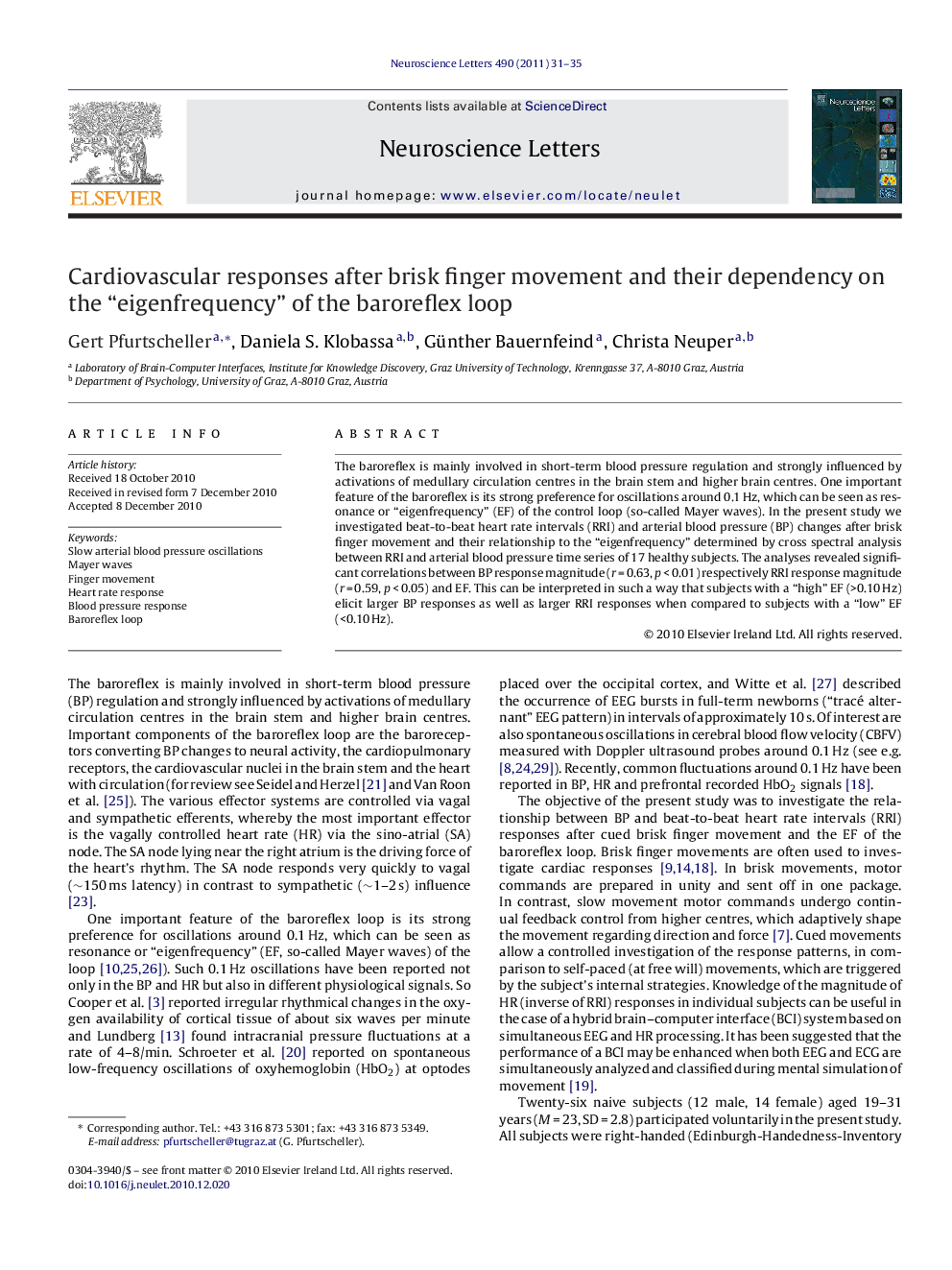| Article ID | Journal | Published Year | Pages | File Type |
|---|---|---|---|---|
| 4345561 | Neuroscience Letters | 2011 | 5 Pages |
The baroreflex is mainly involved in short-term blood pressure regulation and strongly influenced by activations of medullary circulation centres in the brain stem and higher brain centres. One important feature of the baroreflex is its strong preference for oscillations around 0.1 Hz, which can be seen as resonance or “eigenfrequency” (EF) of the control loop (so-called Mayer waves). In the present study we investigated beat-to-beat heart rate intervals (RRI) and arterial blood pressure (BP) changes after brisk finger movement and their relationship to the “eigenfrequency” determined by cross spectral analysis between RRI and arterial blood pressure time series of 17 healthy subjects. The analyses revealed significant correlations between BP response magnitude (r = 0.63, p < 0.01) respectively RRI response magnitude (r = 0.59, p < 0.05) and EF. This can be interpreted in such a way that subjects with a “high” EF (>0.10 Hz) elicit larger BP responses as well as larger RRI responses when compared to subjects with a “low” EF (<0.10 Hz).
Research highlights▶ Relationship of beat-to-beat heart rate interval (RRI) changes to “eigenfrequency” (EF). ▶ Relationship of arterial blood pressure (BP) changes to “eigenfrequency” (EF). ▶ Significant correlations between BP and, respectively, RRI response and EF.
